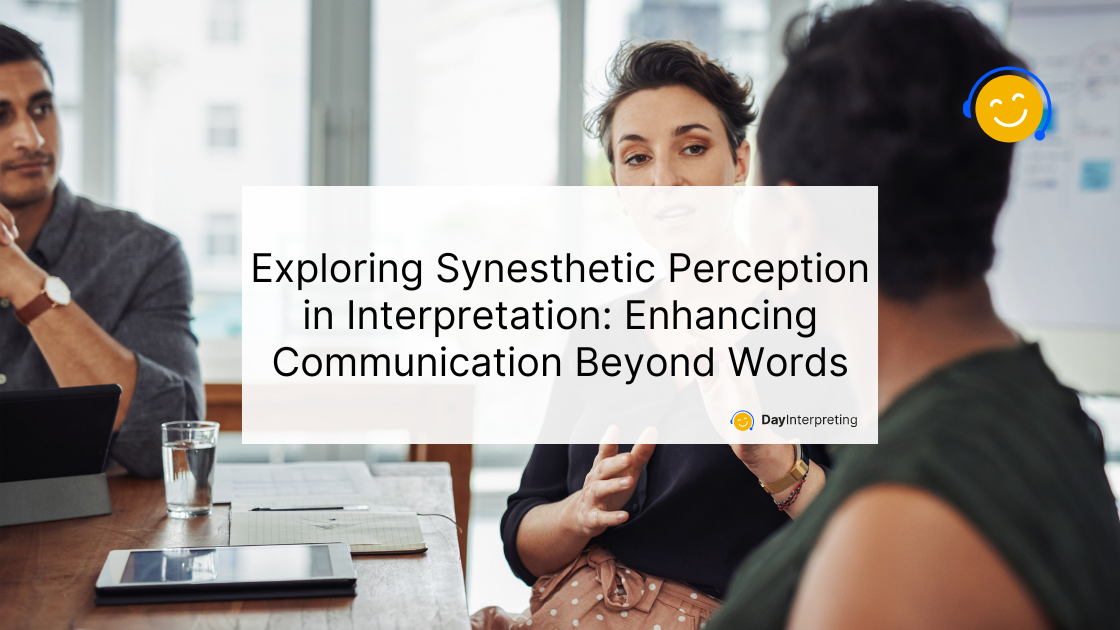Imagine a world where words not only convey meaning but also create a symphony of colors, tastes, and sensations. This magical phenomenon is known as synesthesia, and when applied to interpreting, it opens doors to a whole new level of communication. In this article, we delve into the fascinating realm of synesthetic perception in interpretation, where language transcends its traditional boundaries to evoke a multisensory experience.
Understanding Synesthesia
Synesthesia is a rare neurological condition where stimulation of one sensory or cognitive pathway leads to automatic, involuntary experiences in a second pathway. For example, hearing a word might evoke the perception of a specific color or taste. This blending of senses creates a unique perspective on the world, turning everyday experiences into a vibrant tapestry of sensations.
Synesthetic Perception in Interpretation
When synesthetic individuals engage in interpretation, they bring this heightened sensory awareness into play. For them, words are not just strings of sounds but triggers for a cascade of sensory responses. This can profoundly influence the interpretation process, adding layers of depth and nuance that traditional methods may overlook.
Enhancing Communication
One key benefit of synesthetic perception in interpretation is the ability to convey subtle emotions and nuances that might be lost in translation otherwise. For example, a synesthetic interpreter might use color associations to express the mood of a conversation or the tone of a speaker’s voice. This adds richness and authenticity to the communication, fostering a deeper understanding between parties.
Challenges and Considerations
While synesthetic perception offers a unique approach to interpretation, it also comes with challenges. Not everyone experiences synesthesia, so communicating these sensory associations effectively requires skill and sensitivity. Ensuring accuracy in conveying the intended meanings behind synesthetic experiences is crucial to avoid misunderstandings. This challenge underscores the need for a nuanced understanding of synesthetic perception in interpretation.
Training and Development
Training and development programs play a vital role in harnessing the power of synesthetic perception in interpretation. These programs focus on honing sensory awareness, understanding the cultural context of sensory associations, and seamlessly integrating synesthetic techniques into the interpretation process. By empowering interpreters with these skills, we can unlock new dimensions of communication.
Real-World Applications
Synesthetic interpretation finds applications across various fields, from artistic performances where language and visuals intertwine to diplomatic settings where subtle nuances can make a significant impact. For businesses operating in multicultural environments, leveraging synesthetic interpretation can enhance cross-cultural communication and foster stronger relationships with clients and partners.
Did You Know?
- Synesthesia affects approximately 1 in every 2,000 people worldwide, making it a relatively rare but fascinating phenomenon.
- Famous artists like Vincent van Gogh and Wassily Kandinsky are believed to have experienced synesthesia, influencing how they depicted colors and emotions in their artwork.
- There are different types of synesthesia, including grapheme-color synesthesia (associating letters or numbers with specific colors) and sound-color synesthesia (associating sounds with colors).
- Some synesthetes have reported experiencing taste sensations when hearing certain words or sounds, leading to a unique fusion of language and flavor perception.
- Synesthetic perception can vary widely among individuals, with some associating specific colors or sensations with words consistently, while others may have more fluid or overlapping associations.
- Studies have suggested a link between synesthesia and enhanced memory recall, as the multisensory nature of synesthetic experiences creates stronger neural connections.
- Synesthesia can be triggered by various stimuli, including music, spoken language, and even touch, showcasing the diverse ways in which sensory pathways can interact.
- Synesthetic interpretation isn’t limited to just words and colors. Some synesthetes also associate textures, temperatures, and spatial arrangements with linguistic elements, adding another dimension to their perception of language.
Wrapping Up
Synesthetic perception in interpretation is a bridge between words and experiences, transforming communication into a multisensory journey. By embracing and understanding this phenomenon, we open doors to deeper connections, richer conversations, and a world where language transcends its traditional boundaries to create something truly extraordinary.





0 Comments